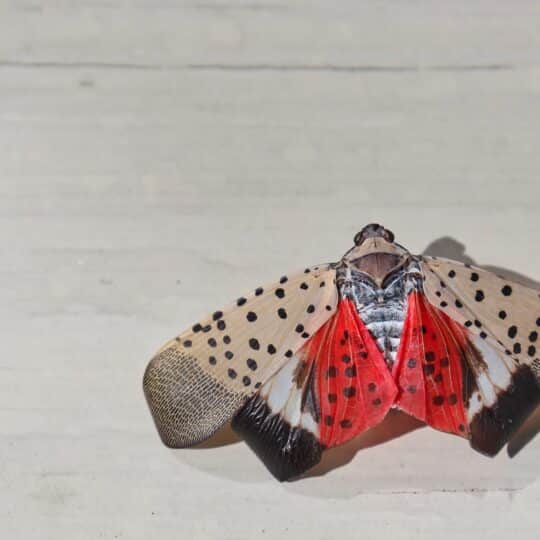What Are Lanternflies and What Makes Them a Pest?

Lanternflies, a term often associated with the invasive Spotted Lanternfly (Lycorma delicatula), have garnered significant attention due to their pest status in regions across the United States. They have also, as of last year, arrived in the Northern Virginia area, and officials want the public’s help in dealing with them.
Originally native to parts of Asia, these insects have spread to other parts of the world, causing notable concern among agricultural and environmental communities.
What Are Lanternflies?
Lanternflies are distinguished by their striking appearance, including vibrant wing patterns and a distinctive lifecycle that contributes to their invasive nature. Their spread has been facilitated by human activities, leading to challenges in controlling their population and mitigating their impact.
- Have you noticed unusual, moth-like insects congregating on trees and plants in your area?
- Are you concerned about the potential damage to local vegetation and agricultural crops?
- Do you seek to understand the ecological and economic impact of lanternflies?
Lanternflies are notable for their unique lifecycle, which includes multiple developmental stages from egg to adult. They are most recognizable in their adult form, characterized by their striking wing patterns and size. They look like moths (although they are not moths, they are called planthoppers), with brown spotted wings and vibrant red on their backs.
These insects are known for their plant-hopping behavior and the distinctive, sugary excretion known as honeydew, which they produce in large quantities.
Reasons for Pest Status
Spotted lanternflies can look innocent, but are actually a serious risk to agriculture and gardens in the Gainesville area. That is why they are classified as a pest, and residents are encouraged to eliminate them on sight. The classification of lanternflies as pests stems from several key factors:
- Agricultural Damage – Lanternflies pose a significant threat to a wide range of crops, including grapes, hops, and hardwood trees. Their feeding habits can weaken plants, reduce yields, and, in severe cases, lead to plant death.
- Economic Impact – The agricultural damage caused by lanternflies translates into substantial economic losses for farmers and industries reliant on affected crops. Controlling their spread and mitigating their impact requires considerable investment in management and control measures.
- Environmental Effects – Beyond their direct impact on agriculture, lanternflies can disrupt local ecosystems. The honeydew they produce encourages the growth of sooty mold, which can further damage plants and reduce biodiversity in affected areas.
- Nuisance to Residents – In heavily infested areas, the presence of lanternflies can become a significant nuisance for residents. The accumulation of honeydew and sooty mold can affect outdoor spaces, and the sheer number of insects can be disruptive.
Spotted lanternflies may not look dangerous. But if they continue to spread across the region, we can be.
Implications for Affected Regions
The spread of lanternflies necessitates a coordinated response to manage and control their population, and local officials are looking into ways to address the issue. Early detection is crucial for managing lanternfly infestations. Residents and authorities in affected areas are encouraged to report sightings to help track and control their spread.
Various strategies, including chemical treatments, biological control agents, and physical removal of egg masses, are employed to reduce lanternfly populations and protect vulnerable crops and ecosystems. Educating the public about the impact of lanternflies and ways to prevent their spread is an essential component of controlling their impact.
Getting Rid of Lanternflies
Lanternflies represent a significant pest challenge in regions where they have become established. It’s important that everyone in the Gainesville area look into ways that they can help, and eliminate any lanternflies if they see them.